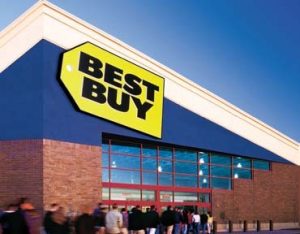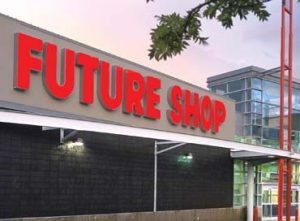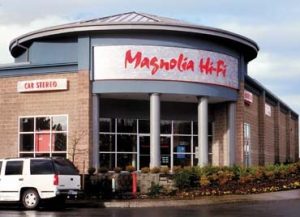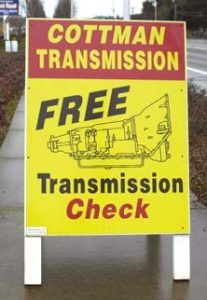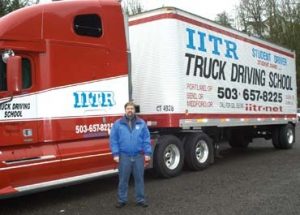Business Management
The End-User Perspective
A look at the sign-buyers’ point of view
Published
18 years agoon

Signmakers work hard to please their customers, but, once the sign is installed, communication may end. Without feedback from clients, signshops can’t know if they’re meeting the end users’ needs.
For the sign/graphic’s end user, the quality and speed with which the sign is completed often determines the success of a business or promotion.
Many large, multi-site companies work with larger sign companies so they can have one-stop shopping for signs for all their stores nationwide. However, local sign companies are often hired to install the signs or fabricate special orders. Several large retailers say there may be a place for smaller sign companies to produce some of the signage for a large, national corporation.
Best Buy
Electronics retailer Best Buy (based in Minneapolis), prints much of its own in-store signage inhouse, said Best Buy’s Jay Higashi. Additionally, Best Buy’s volume precludes some smaller shops from being able to fulfill a large order.
However, Higashi said Best Buy also operates many smaller, specialty stores in the United States and Canada that typically use smaller, more specialized vendors for sign orders.
We realize that smaller companies also don’t have the overhead that many large shops do,” Higashi said.
Best Buy’s in-house art department designs its signs and graphics, but, when overloaded, Higashi said they call outside firms for design assistance. Outside vendors then bid on an order. Best Buy has a preferred vendors program, and it arranges tours year-round to visit different vendors for possible future use.
“We constantly evaluate our vendors and the value of our signage,” Higashi said.
He said they try to let their sign companies know where the problems are, and he wants the sign companies to tell them if there are things they need to improve.
Wild Oats
Abel Villacorta, creative director for Boulder, CO-based Wild Oats natural markets, which also owns Henry’s Farmers Markets on the West Coast, often relies on natural materials, such as wood, and an environmentally friendly approach for signs.
For Henry’s, each sign was handcrafted by an artist to maintain the farmer’s market feel at the stores. Recently, Villacorta said the handcrafted signs were photographed, and then the images were printed directly to the substrate for use in stores. Using the printed signs was a more economical and faster approach, which mostly goes unnoticed by shoppers.
Wild Oats is working to launch a new prototype of stores. A consulting firm helped determine the look and feel of the store’s décor. Once the concept was developed, the designs were finalized and then sent out in separate bids for interior and exterior signs and graphics. Villacorta said the separate bids attract companies with expertise in each specific area.
Inhouse, the marketing and store-design teams divide the work based on 2-D (temporary) and 3-D (permanent) signs. The teams coordinate with vendors who will manufacture the signs, Villacorta said.
Wild Oats works with a broker for its soft-sign orders to get the best price and quality from printers. Villacorta suggests smaller sign companies that are courting large, multi-location retailers should approach sign brokers, but he also said directly contacting the retailer can spark a relationship.
Villacorta said Wild Oats prefers one national vendor, but will use smaller sign companies for its regional sign programs.
“The local guys know the local variances better. We base our signage on the codes, but we may not know about the variances,” Villacorta said. “We try to build relationships with vendors because we want them to understand our brand, in addition to their industry.”
Many companies just sell you what they do well, what they do over and over again. Wild Oats wants them to understand the green philosophy of the business, he said.
Wild Oats has a small, inhouse staff, so its sign vendors need to have design expertise. Dealing with signshops requires continuing communication and understanding of the project.
“We’re not just giving you a job, and you are executing it,” Villacorta said. “It’s more than that.”
Sunoco
Ben Arbizo, of Sunoco’s retail marketing department, said the competitive convenience store market relies heavily on signage and graphics, especially when competing gas stations/convenience stores are often right across the street. Arbizo said many Sunoco graphics are digitally printed, but they frequently rely on screenprinting for a major graphics rollout.
Arbizo said his company pre-qualifies vendors for bids. Sometimes, Sunoco’s maintenance department participates in the decision if it will handle any changes or updates once the signs are installed.
With sign companies and the customers, communication and collaboration is key. Arbizo said he wants to be told if better material or new technology could be used. He also wants to know when the sign ships and when it will arrive.
Accor Hotels
Tab Sims, senior director of outdoor advertising for Accor North America Hotels (Carrollton, TX), wondered, when the company began rebranding and redesigning its Red Roof Inns, how the exterior signage would change.
“I kept waiting for someone to say, ‘What about the signs?'” Sims said.
When nobody did, Sims brought up the topic himself. He said Red Roof Inn needed to decide what it wanted to tell its customers through its signage.
“We can’t spend $2 million on the inside [of the hotel] and not reflect the change in the signage,” Sims said. “Someone going down the highway isn’t going to see anything different.”
Sims led the charge to redesign Red Roof Inn’s main identification signs and presented a new idea to replace the original, gothic-style design from the 1970s. Once the design was approved by the Accor management, Sims sent it out to bid, and the signs are now being implemented.
The procurement department is only interested in price, Sims explained. It’s difficult to get the lowest price and the best quality and service. “Price and on-time delivery are key to our culture,” Sims said.
Sign companies and vendors can be more proactive because they have access to new technology. Sims said Accor relies on “off the road” customers, which makes the large, highway signs essential.
“Let us know if there’s a sign-code change that would allow us to put in more effective signs,” Sims said.
Sims said Accor deals with designers who coordinate the sign fabrication, but Accor also sometimes deals directly with a sign company.
Accor often uses local sign companies for installations, but Sims said it’s easier to keep up with one or two manufacturers.
“It’s impractical to manage orders from many small vendors,” Sims said.
Kroger
Mary Gawle, manager of interior design for Kroger Co., a nationwide grocery retailer headquartered in Cincinnati, said they always outsource store signage and graphics design, and often employ signmakers/designers that specialize in the grocery business. They typically choose one company to create one component of the décor. So, if they need signs that read “Delicatessen” in multiple stores, Gawle said they’d have one company fabricate all of those signs for all of the stores.
Various signage and décor elements for a grocery store come from different departments’ budgets, instead of a single budget. For example, more permanent, fixed signs are often part of the building/construction department, but a smaller sign hanging over the bread shelf that reads “Crusty Bread” might be part of the advertising-department budget, Gawle said. Also, many end caps and floor displays are provided by the food vendors, at no cost to Kroger, to promote their products in the store.
| Well-Placed Signs Impact Small Businesses | |||
Dave Riggins, president of IITR truck driving schools (Clackamas, OR), has worked with Higgins Signs (also of Clackamas) for 20 years. John Higgins’ full-service sign company has provided all of the signs used at the five truck-school locations, plus the vinyl trailer wraps on the school’s 25 tractor-trailers. Riggins said the trailer wraps elicit a much stronger response from potential students than television ads (which Riggins says they stopped because of cost and lack of response), newspaper ads or Yellow Pages ads. “Each trailer [ad] is $2,500 per unit, which seems like a lot,” Riggins said. “But given the amount of leads I get from it, that amount becomes chump change.” Riggins estimates at least half of the school’s 475 annual students learned about the program through the truck-side graphics. Riggins said Higgins suggested the large truck graphics, and Riggins initially resisted. Higgins, however, presented several fonts and designs and let Riggins choose. Elsewhere, Mike Trafton, proprietor of Cottman Transmission in Clackamas, saw business increase after he put an inexpensive A-frame sign on the walkway outside his transmission shop, which is located on a busy street with 50,000 passing cars each day. “It increased our customer count, and that’s what it’s all about in this business,” Trafton said. Trafton said the small sign was even more effective than his existing, building-fascia signs. The A-frame sign offered greater visibility because it’s directly in drivers’ lines of vision. Plus, the sign, which advertises a free transmission check, was crafted by Higgins Signs using reflective material to provide nighttime visibility. The simple, A-frame sign had a greater impact than direct mail, newspaper inserts, radio and TV ads, Trafton said. He selected Higgins Signs because of its good reputation and tendency to use design creativity and bold colors, Trafton said. He wanted a transmission image and the concept offer of free estimates, and Higgins presented design options. Trafton tracks how his customers heard of the transmission shop. His specialized business averaged 14 customers per week before installing the sign. Since the A-frame sign was posted in October, Trafton said the average increased to 16 customers per week. More customers now say they learned of the business because of the A-frame sign, than when Trafton relied solely on his building signage and banner. “It’s brought me business now, but, just as important, it’s planted a seed so that a customer knows where to go in the future if they have a transmission problem,” Trafton said. |
|||

SPONSORED VIDEO
Introducing the Sign Industry Podcast
The Sign Industry Podcast is a platform for every sign person out there — from the old-timers who bent neon and hand-lettered boats to those venturing into new technologies — we want to get their stories out for everyone to hear. Come join us and listen to stories, learn tricks or techniques, and get insights of what’s to come. We are the world’s second oldest profession. The folks who started the world’s oldest profession needed a sign.
You may like

NUtec Digital Ink Invests in Solar Energy for Facility

5 Reasons to Sell a Sign Company Plus 6 Options

21 Larry Albright Plasma Globes, Crackle Tubes and More
Subscribe

Bulletins
Get the most important news and business ideas from Signs of the Times magazine's news bulletin.
Most Popular
-

 Tip Sheet1 week ago
Tip Sheet1 week agoAlways Brand Yourself and Wear Fewer Hats — Two of April’s Sign Tips
-

 Photo Gallery3 days ago
Photo Gallery3 days ago30 Snapshots of the 2024 ISA Sign Expo
-

 Ask Signs of the Times5 days ago
Ask Signs of the Times5 days agoWhy Are Signs from Canva so Overloaded and Similar?
-

 Real Deal2 weeks ago
Real Deal2 weeks agoA Woman Sign Company Owner Confronts a Sexist Wholesaler
-

 Benchmarks1 week ago
Benchmarks1 week ago6 Sports Venue Signs Deserving a Standing Ovation
-

 Paula Fargo12 hours ago
Paula Fargo12 hours ago5 Reasons to Sell a Sign Company Plus 6 Options
-

 Photo Gallery12 hours ago
Photo Gallery12 hours ago21 Larry Albright Plasma Globes, Crackle Tubes and More
-

 Women in Signs2 weeks ago
Women in Signs2 weeks ago2024 Women in Signs: Megan Bradley
